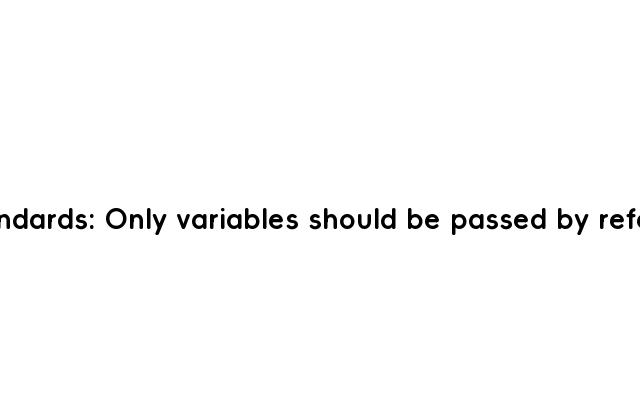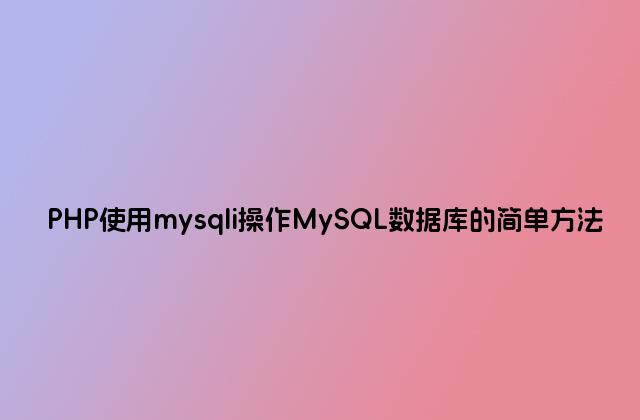
本文实例讲述了Smarty模板引擎缓存机制。分享给大家供大家参考,具体如下:
首先说下smarty缓存和编译,这是两个不同的概念,编译默认情况下是启动的,而缓存机制需要人为开启,smarty编译过的文件还是php文件,所以执行的时候还是编译的,如果涉及到数据库,还是要访问数据库的所以开销也不小啦,所以需要smarty缓存来解决!
1.开启全局缓存
$smarty->cache_dir = "/caches/"; //缓存目录 $smarty->caching = true; //开启缓存,为flase的时侯缓存无效 $smarty->cache_lifetime = 3600; //缓存时间
2.一个页面使用多个缓存
如:一个文章模板页面会生成多个文章页面,当然是缓存成很多页面,实现起来很简单,只要在display()方法设置第二个参数,指定唯一标识符即可。如下php代码:
$smarty->display('index.tpl',$_GET["article_id"]);
如上,通过第二个参数文章的id缓存一个文章页面。
3.为缓存减小开销
也就是说,已经缓存的页面无需进行数据库的操作处理了,可通过is_cached()方法判断!
if(!$smarty->is_cached('index.tpl')){
//调用数据库
}
$smarty->display('index.tpl');
4.清除缓存
一般在开发过程中是不开启缓存的,因为在缓存时间内输出结果不变,但是在应用过程中开启缓存能大大提高web性能,清除缓存方法如下:
clear_all_cache();//清除所有缓存
clear_cache('index.tpl');//清除index.tpl的缓存
clear_cache('index.tpl',cache_id);//清除指定id的缓存
5.关闭局部缓存
如果一个页面中一部分缓存,而另一部分不需要缓存,就可以这样做,比如说显示用户登录的名称就需要关闭缓存,smarty提供了如下三种解决方法:
(1)使用insert模板的一部分不被缓存
定义一个inser标签要使用的处理函数,函数名格式为:insert_xx(array $params, object &$smarty)其中的xx是insert的name,也就是说,如果你定义的函数为insert_abc,则模板中使用方法为{insert name=abc}
参数通过$params传入
也可以做成insert插件,文件名命名为:insert.xx.php,函数命名为:smarty_insert_aa($params,&$smarty),xx定义同上
(2)$smarty->register_block($params, &$smarty)使整篇页面中的某一块不被缓存
定义一个block:
smarty_block_name($params,$content, &$smarty){return $content;}
//name表示区域名
注册block:
$smarty->register_block(name, smarty_block_name, false); //第三参数false表示该区域不被缓存
模板写法:
{name}内容 {/name}
写成block插件:
第一步:定义一件插件函数:block.cacheless.php,放在smarty的 plugins目录
block.cacheless.php的内容如下:
<?php
function smarty_block_cacheless($param, $content, &$smarty) {
return $content;
}
?>
第二步:编写程序及模板
示例程序:testCacheLess.php
<?php include(Smarty.class.php); $smarty = new Smarty; $smarty->caching=true; $smarty->cache_lifetime = 6; $smarty->display(cache.tpl); ?>
所用的模板:cache.tpl
已经缓存的:{$smarty.now}<br>
{cacheless}
没有缓存的:{$smarty.now}
{/cacheless}
现在运行一下,发现是不起作用的,两行内容都被缓存了
第三步:改写Smarty_Compiler.class.php(注:该文件很重要,请先备份,以在必要时恢复)
查找:
$this->_plugins[block][$tag_command] = array($plugin_func, null, null, null, true);
修改成:
if($tag_command == cacheless) $this->_plugins[block][$tag_command] = array($plugin_func, null, null, null, false); else $this->_plugins[block][$tag_command] = array($plugin_func, null, null, null, true);
你也可以直接将原句的最后一个参数改成false,即关闭默认缓存。
(3)使用register_function阻止插件从缓存中输出
index.tpl:
<div>{current_time}{/div}
index.php:
function smarty_function_current_time($params, &$smarty){
return date("Y-m-d H:m:s");
}
$smarty=new smarty();
$smarty->caching = true;
$smarty->register_function('current_time','smarty_function_current_time',false);
if(!$smarty->is_cached()){
.......
}
$smarty->display('index.tpl');
注解:
定义一个函数,函数名格式为:smarty_type_name($params, &$smarty)
type为function
name为用户自定义标签名称,在这里是{current_time}
两个参数是必须的,即使在函数中没有使用也要写上。两个参数的功能同上。
更多关于Smarty相关内容感兴趣的读者可查看本站专题:《smarty模板入门基础教程》、《PHP模板技术总结》、《PHP基于pdo操作数据库技巧总结》、《PHP运算与运算符用法总结》、《PHP网络编程技巧总结》、《PHP基本语法入门教程》、《php面向对象程序设计入门教程》、《php字符串(string)用法总结》、《php+mysql数据库操作入门教程》及《php常见数据库操作技巧汇总》
希望本文所述对大家基于smarty模板的PHP程序设计有所帮助。






